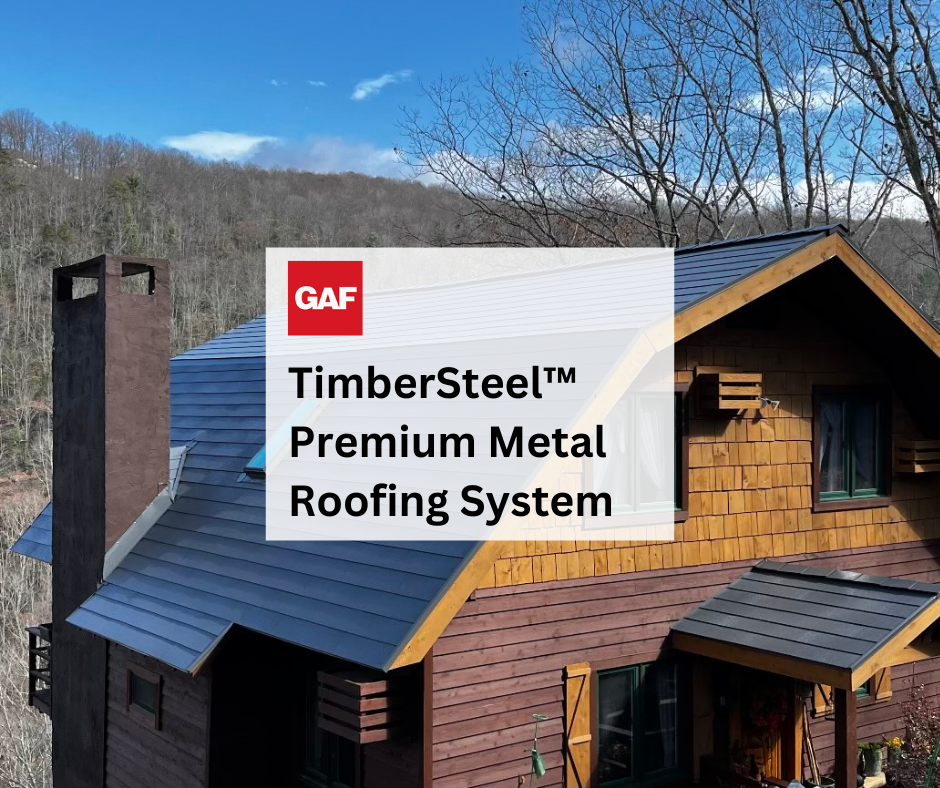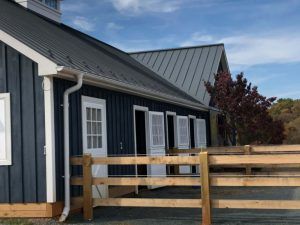How to Tell If Your Roof Needs Repair in Augusta County and Staunton, VA
Most homeowners in Augusta County and Staunton, VA can spot early roof problems by checking for missing or curled shingles, water stains on ceilings, granules in gutters, or sagging rooflines; you should inspect your attic for light gaps and mold, monitor shingle age after storms, and hire a local professional when you see persistent leaks or damage to protect your home's value and safety.
Key Takeaways:
- Check exterior signs after storms: missing, cracked, curled, or granule‑loss shingles; damaged flashing; sagging rooflines; and debris in gutters indicate repair needs.
- Look for interior warning signs: ceiling or attic water stains, mold or mildew, damp insulation, or daylight showing through roof sheathing.
- Consider roof age and local weather: roofs near or past their expected lifespan (often ~20–30 years for asphalt) or repeatedly exposed to wind, hail, and winter weather in Augusta County and Staunton should get a licensed local inspection and estimate.
Types of Roof Issues
You'll encounter problems ranging from missing or granule‑loss shingles to flashing failures, ponding water, and structural sag; wind over 60 mph and hail larger than 1" commonly cause sudden damage. Asphalt shingles typically last 20–30 years, but poor ventilation or persistent moisture can cut that lifespan. Inspect your attic, gutters, and roofline after storms or when you see interior stains, as early detection limits repair scope and cost.
- Inspect your attic for daylight, stains, or mold growth after heavy rain.
- Check gutters quarterly for granule buildup and shingles that have lifted.
- Document damage with photos and dates for insurance purposes.
- After you spot significant issues, contact a licensed roofer for assessment and an estimate.
| Missing shingles | Exposes underlayment; look at ridges and eaves for wind loss. |
| Cracked/curled shingles | Signals age or heat stress; 1/2" curl often means replacement soon. |
| Flashing failure | Leaks around chimneys, vents, and valleys; check metal seams and sealant. |
| Ponding water | Flat areas that hold water can degrade membrane and cause rot within 1–3 years. |
| Ventilation issues | Poor attic airflow raises temps 10–20°F and accelerates shingle wear. |
Common Types of Roof Damage
You should expect asphalt shingle granule loss, wind‑blown or missing shingles, hail dents, flashing breaches, and moss or algae growth; each shows differently—for example, hail >1" often leaves pockmarks, while algae leaves dark streaks. In this region, freeze‑thaw cycles speed up wear, so check after winter and spring storms to limit interior damage.
- Look for granules in gutters and dark patches on shingles as first signs.
- Lifted or missing shingles at edges point to wind uplift from storms over 40–60 mph.
- Seal or replace failing flashing around chimneys and skylights to stop leaks.
- After you confirm damage, gather photos and dates before contacting insurers or contractors.
| Granule loss | Gutters full of grit; reduces UV protection and shortens life. |
| Wind damage | Lifted tabs, torn shingles, common after gusts >50 mph. |
| Hail impact | Pitted shingles and bruising; hailstones ≥1" are more damaging. |
| Flashing leaks | Rust or gaps at metal flashings cause localized leaks. |
| Moss/algae | Retains moisture, can lift shingles and trap debris. |
Signs of Roof Wear and Tear
You should watch for granular debris in gutters, cracked or cupped shingles, visible light in the attic, ceiling stains, and sagging deck sections; these indicators often precede active leaks and higher repair costs. Inspect twice yearly—spring and fall—and after major storms to catch issues while repairs remain affordable.
When you inspect, quantify what you find: note granule depth in gutters, measure shingle curl (≥1/2" commonly signals replacement), and photograph any daylight through the roof deck. Check attic insulation and ventilation—temperatures 10–20°F higher than exterior mean poor airflow—and probe stains with a moisture meter if available; in Staunton and Augusta County, repeated freeze‑thaw and heavy winter snowfall raise your risk of ice dams and accelerated flashing failures.
Factors to Consider
- You should factor roof age and material—asphalt typically 20–25 years, architectural 25–30, metal 40–70, slate 75–100—when deciding repair versus replacement.
- You should weigh local weather: hail, freeze‑thaw cycles, heavy rain, and summer storms accelerate wear, cause granule loss, and compromise flashing.
- Your roof pitch and drainage affect leak risk; low slopes trap water while steep roofs shed debris and stress shingles differently.
- Your attic ventilation and insulation influence ice‑dam formation and shingle longevity; poor ventilation raises attic temps and speeds deterioration.
- You should review previous repairs and installation quality to estimate vulnerability and likely repair costs.
- After major storms you should schedule an immediate exterior check for missing shingles, dented metal, loose flashing, and inspect your attic for active leaks.
Age of the Roof
You should use your roof's age and material to guide decisions: if your asphalt shingles are past 15–20 years with visible granule loss, curling, or multiple leaks, replacement often yields better long‑term value than repeated patching; metal or slate roofs may only need targeted repairs even at 30–50 years, but inspect fasteners, flashings, and valleys for fatigue after storm events.
Weather Conditions in Augusta County and Staunton
Your roof endures a four‑season Shenandoah Valley climate—Staunton sits around 1,500 ft elevation and the region averages about 35–45 inches of precipitation yearly, with summer thunderstorms, occasional hail, and winter freeze‑thaw cycles; you should expect wind gusts over 50 mph that can lift shingles and increase granule loss, so inspect after heavy wind, hail, or snow.
Higher elevations in Augusta County often receive more snow and stronger winds—ridges above 3,000 ft can amplify ice‑dam risk on valley homes—so you should plan inspections twice a year (spring and fall) plus one after any hail or wind event, verify flashing at chimneys and valleys, and maintain attic insulation near R‑38 with continuous ventilation to reduce freeze‑thaw damage and extend shingle life.
Step-by-Step Inspection Guide
Quick Roof Inspection Checklist
| Area | What to look for |
|---|---|
| Roof surface | Check for missing or broken shingles, curling edges, and bare spots where granules are gone; more than a few missing shingles or large bald areas indicate repair or replacement. |
| Flashing & valleys | Inspect metal flashing around chimneys, vents, and valleys for rust, gaps, or cracked sealant; leaks often start here after wind or ice events. |
| Gutters & downspouts | Look for granule buildup, shingle debris, and signs of overflow or sagging—blocked gutters accelerate roof edge rot and fascia damage. |
| Attic & interior | Scan the attic for water stains, mold, wet insulation, or daylight between rafters; interior staining on ceilings often shows active leaks. |
Conducting a Visual Inspection
Perform inspections twice a year—spring and fall—and after storms; start from the ground with binoculars to spot missing shingles, curled edges, or discolored areas, then safely walk the roof if you can do so without risking fall hazards, checking flashing, vents, and HVAC mounts for gaps or loose fasteners; document issues with photos and note areas larger than 3–5 damaged shingles or any sagging.
When to Call a Professional
Call a licensed roofer if you find active leaks, sagging decking, widespread shingle loss, or your roof is 20–25 years old, since these signs often require expert evaluation, moisture testing, or structural repair beyond DIY fixes; also contact a pro after hail exceeding about 1 inch in diameter or wind events that strip multiple shingles.
Expect a contractor to perform a full assessment including an attic moisture scan or infrared imaging, provide a written estimate, and outline repair versus replacement options; obtain 2–3 bids, verify licensing and insurance, and ask for recent local references—typical minor repairs run a few hundred to a couple thousand dollars, while full replacements in Augusta County/Staunton commonly range by size and material from roughly $5,000 to $15,000 or more.
Tips for Maintaining Your Roof
Inspect your roof every spring and fall, clear gutters at least twice yearly, remove branches that overhang the roof, and address missing or damaged shingles promptly to prevent leaks. In shaded areas of Augusta County and Staunton, expect moss and algae—treat within weeks of spotting growth because prolonged buildup lifts shingles and clogs gutters. Recognizing early signs like curling edges, significant granule loss, or dark streaks lets you fix problems before they worsen.
- Inspect spring and fall and after major storms
- Clean gutters and downspouts at least twice a year
- Trim trees so branches stay 6+ feet from the roof
- Schedule a professional inspection every 3–5 years
Regular Cleaning and Maintenance
You should remove leaves and debris from valleys and gutters within 48 hours after storms because standing water accelerates edge rot; clean gutters at least twice a year. Use a soft-bristle brush or low-pressure rinse—avoid power washing which strips protective granules. Consider installing zinc or aluminum strips along the ridge to reduce algae for 3–5 years, and if you must walk on the roof, use a spotter and roof-safe footwear to minimize damage.
Seasonal Checks and Repairs
After winter, inspect flashings, chimney seals, and for ice-dam signs; after summer storms, look for lifted or missing shingles and loose vents. Photograph any damage and note dates; if you find exposed underlayment or multiple missing tabs, arrange repairs within 30 days to avoid interior water damage. For insurance, document issues within 72 hours and obtain a written estimate from a licensed roofer.
Dive deeper by checking your attic after heavy rain for wet insulation, water stains, or daylight through the roof deck—these are clear indicators of active leaks. Architectural shingles generally last 20–30 years, so roofs over 20 years should get a full assessment. Track granule loss—if gutters collect an inch or more or you see bald spots, plan replacement within 1–5 years; use these metrics to prioritize repairs and budget accordingly.
Pros and Cons of Repairing vs. Replacing
| Repair | Replace |
|---|---|
| Lower immediate cost—typical leak repairs in Augusta County run $250–$1,500 depending on scope and flashing work. | Higher upfront expense—full asphalt re-roofs for a 1,500–2,000 sq ft house in Staunton commonly range $7,000–$12,000. |
| Faster turnaround—most repairs finish in a few hours to a day, minimizing disruption to your household. | Longer project time—replacement usually takes 1–3 days but provides a complete, consistent roof system. |
| Targets specific issues like flashing, single-shingle damage, or isolated leaks without changing the whole roof. | Solves systemic problems—rot, widespread shingle failure, or deck damage get addressed in one contract. |
| Often a short-term fix—repairs typically add 3–7 years of life, depending on age and extent. | Longer lifespan—new asphalt architectural shingles last 20–30 years; metal roofs can exceed 40 years. |
| May preserve existing warranty if done per manufacturer guidance, but improper patches can void parts of it. | New warranties—manufacturer and workmanship guarantees often span 20–50 years and 5–10 years respectively. |
| Lower immediate environmental impact—less waste than full tear-off, useful if you plan another full replacement soon. | Opportunity to upgrade—switch to energy-reflective shingles or metal, which can reduce cooling loads by 5–15%. |
| Insurance claims for small repairs may be denied if damage is wear-related rather than storm-caused. | Replacement claims may recover more value in storm events, though depreciation and deductibles still apply. |
| Less disruption to landscaping and driveway since crews are smaller and scope limited. | Greater short-term disruption—tear-off produces more noise, waste, and requires larger crew and dumpsters. |
Cost Considerations
You should expect targeted repairs to cost $250–$1,500 for common leaks or flashing work in the area, while full replacements for a 1,500–2,000 sq ft home in Staunton or Augusta County usually fall between $7,000 and $12,000 for asphalt shingles. Check storm vs. wear coverage with your insurer, compare three local bids, and factor in permits, disposal fees, and any hidden deck or underlayment repairs that can add $500–$2,000.
Long-Term Value
When you weigh life expectancy, a replacement often provides 20–30 years of service and increases curb appeal, whereas repairs generally extend life by only 3–7 years; if your roof is older than 18–20 years, replacement usually delivers better long-term value. Consider warranties and energy upgrades—new materials can reduce maintenance costs and improve resale comparability.
Digging deeper, run a simple lifecycle comparison: if you face recurring repairs averaging $800 every two years for a decade, your total outlay nears $4,000 plus rising patch costs and hidden damage. By contrast, investing $9,000 for a full replacement that lasts 25 years spreads to $360/year and lowers maintenance, and may boost resale value and insurer confidence. You should also factor in potential energy savings from reflective shingles or a metal roof and local resale data showing buyers in this market often prefer recent full replacements over multiple patch jobs.
Resources for Homeowners
When evaluating roof issues you should pull permit records from Augusta County or Staunton building departments, get three written estimates, and verify contractor licensing with the Virginia DPOR. Use local complaint histories—BBB and Nextdoor—to spot recurring problems, and demand a written scope, timeline, and minimum 3‑year workmanship warranty before signing. Keep photos and inspection dates for insurance or future resale.
Local Roofing Contractors
Focus on contractors with at least five years local experience, proper VA DPOR registration, and full liability and workers' comp insurance. Ask for three recent local references and photos of similar asphalt shingle or metal roof jobs on comparable slopes. Insist on a detailed contract with start/end dates, payment schedule, and a minimum 3‑year labor warranty; retain documentation of any material manufacturer warranties.
Roofing Associations and Support Groups
National and state resources help you vet professionals: consult the National Roofing Contractors Association for technical standards, the Virginia DPOR for licensing, and the BBB for complaint history. Local homeowner Facebook groups and Nextdoor often flag repeat offenders and can point to contractors who handled hail or ice‑dam repairs in the last 12–24 months.
Dive into NRCA technical bulletins and manufacturer certification lists—look for contractors with GAF Master Elite or CertainTeed credentials—and check DPOR for any active disciplinary actions. Use BBB complaint counts and Nextdoor threads to see how quickly contractors respond to warranty issues; if multiple homeowners report unresolved leaks after 6–12 months, treat that as a red flag. Associations also run training and arbitration programs you can cite during disputes.
Summing up
Drawing together, if you spot missing, curling, or broken shingles, excessive granules in gutters, interior water stains, sagging rooflines, damaged flashing, or recurring leaks after storms in Augusta County and Staunton, VA, your roof likely needs repair. Inspect your attic for light, mold, or wet insulation, track roof age and storm exposure, and contact a licensed local roofer for a prompt professional assessment to avoid larger failures.
FAQ
Q: What visible and interior signs indicate my roof in Augusta County or Staunton needs repair?
A: Look for missing, cracked, curling, or buckling shingles; excessive granules collecting in gutters or at downspouts; exposed or rusted flashing around chimneys, vents, and skylights; displaced ridge caps or soft spots on the roof surface; moss, algae, or heavy vegetation growth in shaded, tree-lined areas common to Augusta County and Staunton; dark streaks or widespread discoloration. Inside, watch for water stains or peeling paint on ceilings and walls, sagging areas in the ceiling, wet or moldy attic insulation, and visible daylight through the roof boards when attic is inspected. Also note sudden increases in energy bills, which can signal ventilation or insulation problems related to roof damage. Inspect after strong winds, hail, heavy snow or ice events — local storms often reveal damage that wasn’t evident before.
Q: How does the local climate in Augusta County and Staunton affect roof lifespan, and which materials perform best here?
A: The region’s freeze–thaw cycles, winter snow and ice, humid summers, and occasional severe winds increase wear on roofing materials. Asphalt shingles typically last 15–25 years but can deteriorate faster with frequent storm exposure; architectural/laminate shingles and higher-grade synthetic shingles offer better wind and weather resistance; metal roofs resist snow, ice, and rot and often last 40+ years; slate and tile are very durable but require proper structural support and skilled installation. Proper attic ventilation, adequate insulation, ice-and-water barrier installation at eaves and valleys, and routine gutter maintenance reduce ice-dam risk and moisture-related damage. Tree cover common in the area increases moss and algae growth and raises the risk of branch damage, so trimming and regular cleaning extend roof life.
Q: When should I call a roofing professional in Augusta County or Staunton, and what can I expect during an inspection and repair?
A: Contact a licensed roofer after visible damage from storms, active leaks, sagging decking, missing shingles, repeated roof-related interior stains, or when the roof approaches its expected service life. Professionals will perform a full exterior roof survey and an attic inspection to check decking, insulation, ventilation, flashing, chimney seals, and gutters; document damage with photos; recommend repairs versus partial or full replacement; provide a written estimate with scope, materials, timeline, permit needs, and warranty information. For insurance claims, many contractors will help document storm damage and communicate with adjusters. Avoid climbing the roof yourself; for safety and code compliance, rely on qualified local contractors experienced with Augusta County and Staunton permit and weather considerations.



